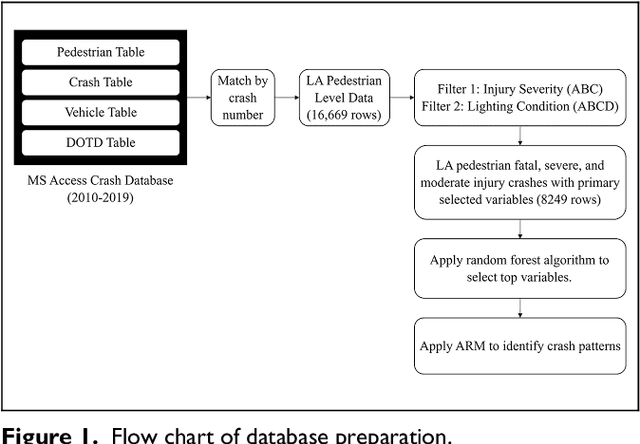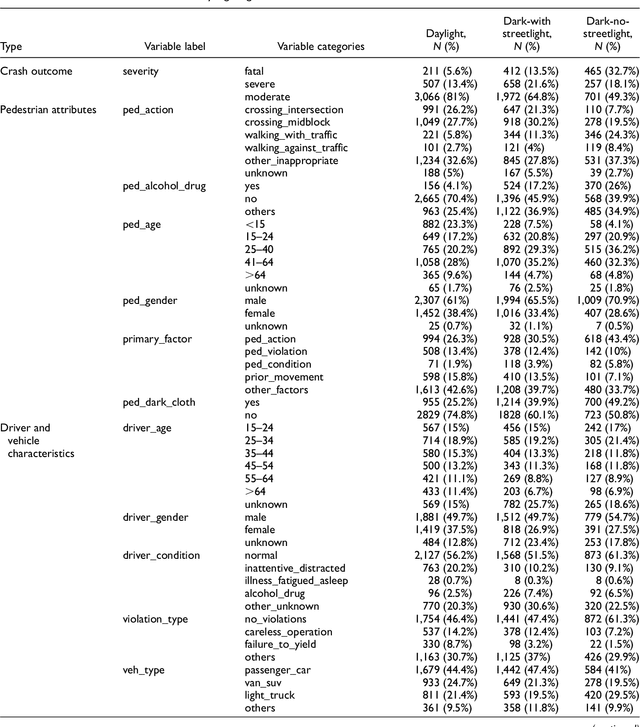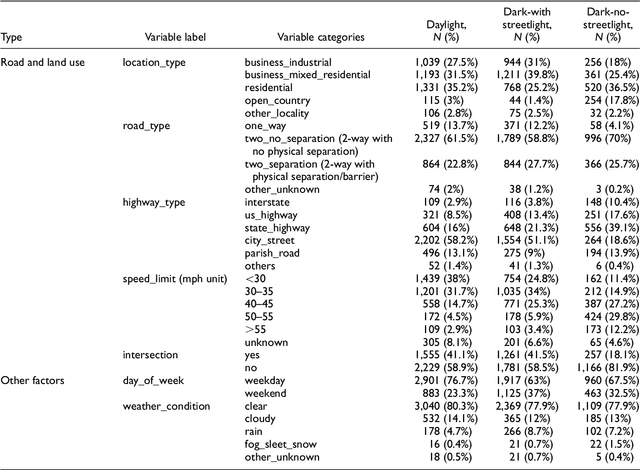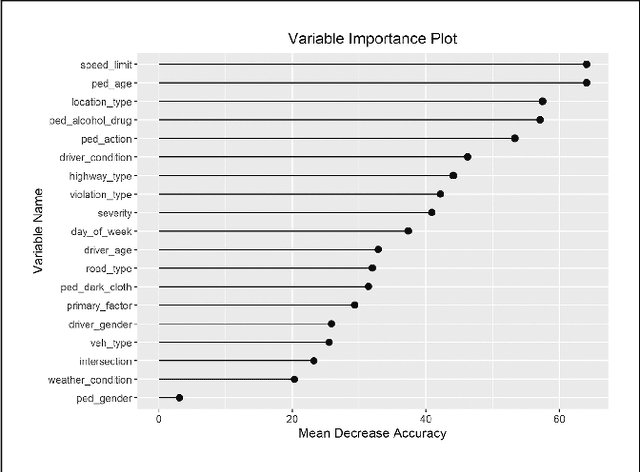Raju Thapa
Applying Association Rules Mining to Investigate Pedestrian Fatal and Injury Crash Patterns Under Different Lighting Conditions
Nov 06, 2022



Abstract:The pattern of pedestrian crashes varies greatly depending on lighting circumstances, emphasizing the need of examining pedestrian crashes in various lighting conditions. Using Louisiana pedestrian fatal and injury crash data (2010-2019), this study applied Association Rules Mining (ARM) to identify the hidden pattern of crash risk factors according to three different lighting conditions (daylight, dark-with-streetlight, and dark-no-streetlight). Based on the generated rules, the results show that daylight pedestrian crashes are associated with children (less than 15 years), senior pedestrians (greater than 64 years), older drivers (>64 years), and other driving behaviors such as failure to yield, inattentive/distracted, illness/fatigue/asleep. Additionally, young drivers (15-24 years) are involved in severe pedestrian crashes in daylight conditions. This study also found pedestrian alcohol/drug involvement as the most frequent item in the dark-with-streetlight condition. This crash type is particularly associated with pedestrian action (crossing intersection/midblock), driver age (55-64 years), speed limit (30-35 mph), and specific area type (business with mixed residential area). Fatal pedestrian crashes are found to be associated with roadways with high-speed limits (>50 mph) during the dark without streetlight condition. Some other risk factors linked with high-speed limit related crashes are pedestrians walking with/against the traffic, presence of pedestrian dark clothing, pedestrian alcohol/drug involvement. The research findings are expected to provide an improved understanding of the underlying relationships between pedestrian crash risk factors and specific lighting conditions. Highway safety experts can utilize these findings to conduct a decision-making process for selecting effective countermeasures to reduce pedestrian crashes strategically.
 Add to Chrome
Add to Chrome Add to Firefox
Add to Firefox Add to Edge
Add to Edge